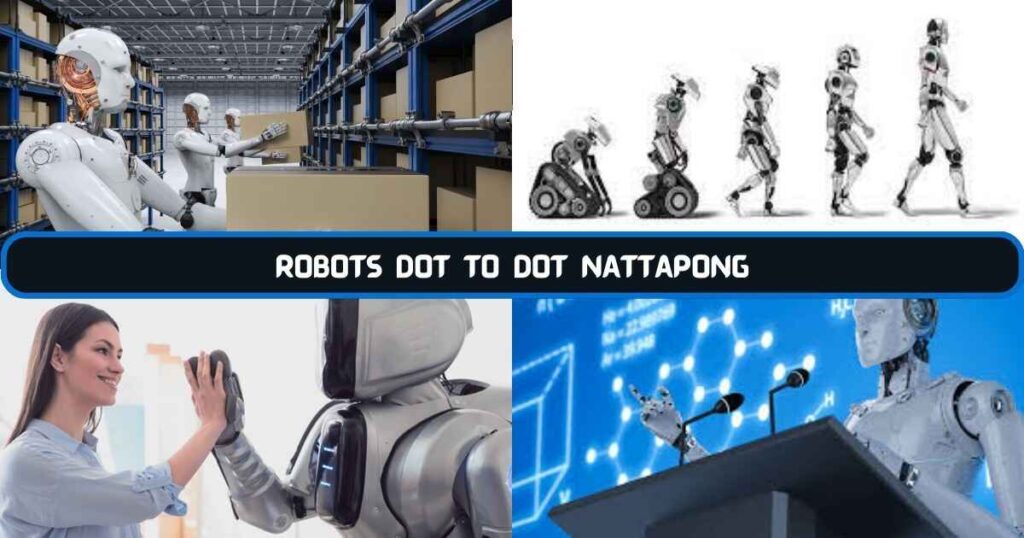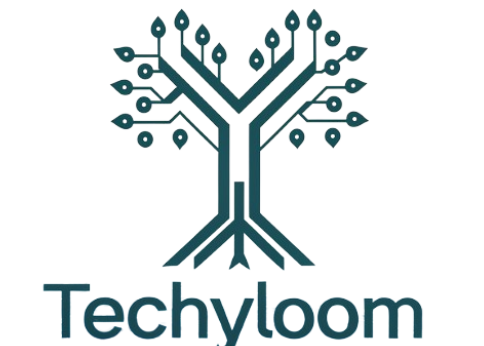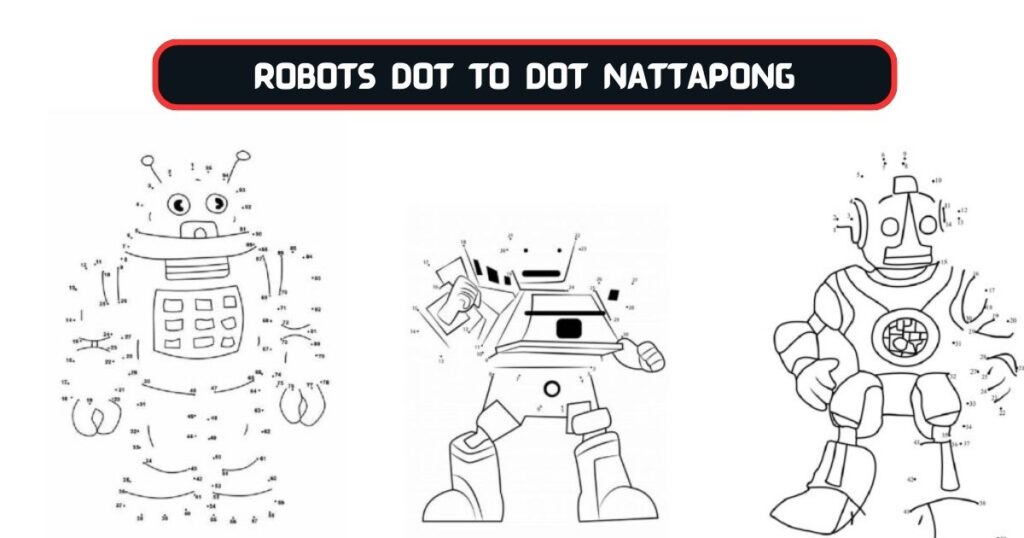Welcome to the exciting world of robotics, where innovation knows no bounds. In this journey of exploration, we embark on a fascinating adventure into the realm of Robots Dot to Dot Nattapong.
Join us as we find the wonders of this groundbreaking technology, poised to reshape industries and enhance human capabilities in 2024 and beyond.
Get ready to delve into the technical specifications, applications, benefits, and challenges of Robots Dot to Dot Nattapong, and discover the endless possibilities that lie ahead in the realm of robotics.
Robots Dot to Dot Nattapong
Robots Dot to Dot Nattapong represents a significant leap forward in the field of robotics, offering a myriad of possibilities for industries and individuals alike. Developed with cutting-edge technology,
Robots Dot to Dot Nattapong is poised to redefine how tasks are performed across various sectors. Let’s move deeper into the intricacies of this innovative technology and explore its potential impact.
Technical Specifications
At the heart of Robots Dot to Dot Nattapong lie its impressive technical specifications, setting it apart as a versatile and powerful robotic system.
Equipped with advanced sensors, actuators, and computational capabilities, Robots Dot to Dot Nattapong possesses the ability to perceive and interact with its environment with remarkable precision.
Key Technical Specifications:
- Advanced sensor suite for environmental perception
- High-performance actuators for precise movement
- Robust computational capabilities for complex tasks
- Modular design for scalability and adaptability
These specifications enable Robots Dot to Dot Nattapong to excel in a wide range of applications, from industrial automation to medical assistance, showcasing its versatility and potential impact across diverse domains.
Applications
The applications of Robots Dot to Dot Nattapong span across various industries, each harnessing its capabilities to streamline processes and enhance productivity.
Let’s explore some of the key sectors where Robots Dot to Dot Nattapong is making waves:
- Manufacturing: In the manufacturing sector, Robots Dot to Dot Nattapong revolutionizes production lines by automating repetitive tasks such as assembly, packaging, and quality control. Its precision and efficiency contribute to increased output and cost savings for manufacturers.
- Healthcare: Robots Dot to Dot Nattapong plays a crucial role in healthcare, assisting medical professionals in tasks ranging from surgical procedures to patient care. With its precise movements and advanced imaging capabilities, it enhances the accuracy and safety of medical interventions, ultimately improving patient outcomes.
- Agriculture: In agriculture, Robots Dot to Dot Nattapong offers solutions for tasks such as planting, harvesting, and crop monitoring. By leveraging its sensors and machine learning algorithms, it optimizes resource usage and crop yield, helping farmers meet the growing demands of food production.
- Logistics: In the logistics industry, Robots Dot to Dot Nattapong streamlines warehouse operations through autonomous navigation, goods sorting, and inventory management. Its efficiency and reliability reduce labor costs and accelerate order fulfillment, enhancing the overall supply chain efficiency.
These are just a few examples of how Robots Dot to Dot Nattapong is transforming industries and reshaping the way tasks are performed.
Its versatility and adaptability make it a valuable asset in any environment where automation and precision are paramount.
Recommended Blog: Cloud TechAsia24.In: Revolutionizing The Future Of Cloud Technology
Benefits

The adoption of Robots Dot to Dot Nattapong brings forth a plethora of benefits for businesses and individuals alike. Let’s explore some of the key advantages:
- Increased Efficiency: By automating repetitive tasks and optimizing processes, Robots Dot to Dot Nattapong boosts efficiency and productivity, allowing organizations to achieve more in less time.
- Precision and Accuracy: With its advanced sensors and precise movements, Robots Dot to Dot Nattapong delivers unparalleled accuracy in performing tasks, minimizing errors and rework.
- Enhanced Safety: In hazardous environments or high-risk tasks, Robots Dot to Dot Nattapong provides a safer alternative by replacing humans in potentially dangerous situations, thus reducing the risk of accidents and injuries.
- Cost Savings: Over time, the use of Robots Dot to Dot Nattapong can lead to significant cost savings for businesses through reduced labor costs, improved resource utilization, and minimized downtime.
These benefits underscore the transformative potential of Robots Dot to Dot Nattapong in improving operational efficiency and driving business success.
Challenges and Limitations
Despite its numerous advantages, Robots Dot to Dot Nattapong also faces challenges and limitations that need to be addressed:
- Safety Concerns: Ensuring the safe interaction between robots and humans remains a critical challenge, particularly in environments where they work alongside each other. Robust safety protocols and standards are essential to mitigate risks.
- Ethical Considerations: The increasing integration of robots into various aspects of society raises ethical questions regarding their impact on employment, privacy, and human dignity. Balancing technological advancement with ethical considerations is paramount.
- Job Displacement: The automation of tasks by Robots Dot to Dot Nattapong may lead to job displacement in certain industries, raising concerns about unemployment and economic inequality. Strategies for reskilling and upskilling the workforce are crucial to address this challenge.
- Complexity and Maintenance: Maintaining and managing Robots Dot to Dot Nattapong systems can be complex and costly, requiring specialized skills and resources. Simplifying user interfaces and implementing predictive maintenance strategies can help alleviate these challenges.
Addressing these challenges is essential to unlock the full potential of Robots Dot to Dot Nattapong and ensure its responsible integration into society.
Latest Innovations
The field of robotics is characterized by continuous innovation and advancements, and Robots Dot to Dot Nattapong is no exception.
Recent developments in the technology have further expanded its capabilities and potential applications:
- Advanced Sensing Technologies: Innovations in sensor technology, such as LiDAR and depth cameras, enable Robots Dot to Dot Nattapong to perceive and interact with the environment with greater accuracy and reliability.
- Machine Learning Algorithms: Integration of machine learning algorithms enhances the adaptability and intelligence of Robots Dot to Dot Nattapong, allowing it to learn from experience and optimize its performance over time.
- Collaborative Robotics: The emergence of collaborative robots, or cobots, facilitates safe interaction between robots and humans, opening up new possibilities for collaborative work environments where humans and robots work side by side.
- Autonomous Navigation: Advances in autonomous navigation algorithms enable Robots Dot to Dot Nattapong to navigate complex environments with ease, facilitating applications in outdoor settings and dynamic indoor environments.
These innovations propel Robots Dot to Dot Nattapong into new realms of possibility, paving the way for its continued growth and adoption across industries.
Future Prospects
The future of Robots Dot to Dot Nattapong is brimming with promise, with ongoing advancements expected to further expand its capabilities and applications:
- Diversification of Applications: As the technology matures, Robots Dot to Dot Nattapong is likely to find applications in a broader range of industries and use cases, from retail and hospitality to entertainment and personal assistance.
- Miniaturization and Mobility: Advances in miniaturization and mobility technologies will enable the development of smaller and more agile robotic systems, opening up new opportunities for deployment in constrained or dynamic environments.
- Human-Robot Collaboration: Collaborative robotics will continue to evolve, facilitating seamless interaction between humans and robots in shared workspaces, leading to more efficient and flexible manufacturing processes.
- Personal Robotics: The development of personal robotics platforms will bring robots into the home and everyday life, offering assistance with household chores, companionship, and entertainment, enhancing quality of life for individuals.
Recommended Blog: UNLOCKING ACCESS WITH UNBLOCKIT: A COMPREHENSIVE GUIDE
Comparative Analysis
Comparing Robots Dot to Dot Nattapong with other similar technologies provides valuable insights into its unique features and capabilities.
By conducting a comparative analysis, we gain a deeper understanding of its strengths and limitations relative to other robotic systems.
- Versatility: Unlike traditional industrial robots, which are often designed for specific tasks in controlled environments, Robots Dot to Dot Nattapong boasts unparalleled versatility. Its modular design and advanced sensing capabilities enable it to adapt to a wide range of tasks and environments, making it a more flexible and adaptable solution.
- Human-Robot Interaction: One key area where Robots Dot to Dot Nattapong excels is in human-robot interaction. While some robotic systems prioritize autonomy and isolation from humans, Robots Dot to Dot Nattapong is designed for collaborative work environments, where it can safely interact with and assist humans in various tasks.
- Sensing and Perception: Another area of distinction lies in its sensing and perception capabilities. Compared to traditional robots that rely on predefined paths and static environments, Robots Dot to Dot Nattapong leverages advanced sensors and machine learning algorithms to perceive and adapt to dynamic environments in real-time, enhancing its autonomy and robustness.
- Cost and Complexity: While Robots Dot to Dot Nattapong offers unparalleled capabilities, it may come at a higher initial cost and complexity compared to traditional robotic systems. However, the potential benefits in terms of increased efficiency, flexibility, and safety often justify the investment for organizations looking to stay competitive in today’s rapidly evolving market.
User Guides or Tutorials
Navigating Robots Dot to Dot Nattapong may require guidance and instructions for optimal usage.
By providing user guides or tutorials, we empower users to leverage the full potential of this technology in their respective domains.
User Guide: Getting Started with Robots Dot to Dot Nattapong
- Unboxing and Setup: Begin by carefully unboxing your Robots Dot to Dot Nattapong system and familiarizing yourself with its components. Follow the provided instructions to set up the hardware and connect it to your network.
- Initial Configuration: Once the hardware is set up, proceed to configure the software settings according to your specific requirements. This may include calibrating sensors, defining task parameters, and setting up communication protocols.
- Basic Operation: After the initial configuration is complete, you can start experimenting with basic operations such as manual control, movement commands, and sensor data visualization. Familiarize yourself with the user interface and control options available.
- Advanced Features: As you become more comfortable with the basic operation, explore the advanced features and capabilities of Robots Dot to Dot Nattapong. This may include programming custom behaviors, integrating with external systems, and optimizing performance for specific tasks.
- Maintenance and Troubleshooting: Regular maintenance is essential to ensure optimal performance and longevity of your Robots Dot to Dot Nattapong system. Refer to the provided documentation for guidelines on maintenance tasks such as cleaning, calibration, and software updates. In case of any issues or errors, consult the troubleshooting section for guidance on identifying and resolving common problems.
Conclusion
In conclusion, Robots Dot to Dot Nattapong represents a groundbreaking advancement in robotics technology, with the potential to revolutionize industries and enhance human capabilities.
From its impressive technical specifications to its diverse applications across various sectors, Robots Dot to Dot Nattapong showcases the power of innovation and automation in driving progress.
However, the journey towards widespread adoption and integration is not without its challenges.
Addressing concerns related to safety, ethics, and job displacement will be crucial in realizing the full potential of Robots Dot to Dot Nattapong while ensuring responsible deployment and usage.
As we look towards the future, the possibilities are endless. With ongoing innovations and advancements,
Robots Dot to Dot Nattapong holds the promise of transforming the way we live and work, paving the way for a more efficient, productive, and interconnected world.








